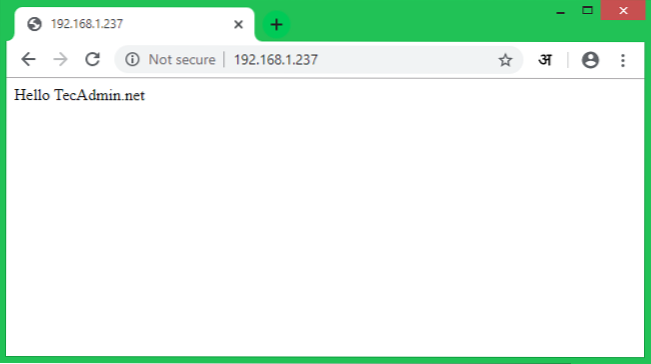- How do you check logs in Journalctl?
- How do I view Systemd logs?
- How do I navigate in Journalctl?
- Where are Systemctl logs stored?
- What is Systemctl?
- How do I check my Systemd status?
- What is Systemd Journald?
- How do I check service logs?
- What is the purpose of Systemd?
- What is Journald?
- Where are Journalctl files stored?
- How do I stop Systemd journaling?
- How do I check Systemctl services?
How do you check logs in Journalctl?
The basic command
Open a terminal window and issue the command journalctl. You should see all output from the systemd logs (Figure A). The output of the journalctl command. Scroll through enough of the output and you might come across an error (Figure B).
How do I view Systemd logs?
To start persisting your logs, uncomment the Storage line in /etc/systemd/journald. conf and set its value to persistent . Your archived logs will be held in /var/log/journal . If this directory does not already exist in your file system, systemd-journald will create it.
How do I navigate in Journalctl?
Journalctl splits the results into pages, similar to the less command in Linux. You can navigate using the arrow keys, the Page Up/Page Down keys, and the space bar. To quit navigation, press the Q key. Long entries are printed to the width of the screen and truncated off at the end if they don't fit.
Where are Systemctl logs stored?
With in-memory journaling, systemd creates its journal files under the /run/log/journal directory. The directory is created if it doesn't exist. With persistent storage, the journal is created under /var/log/journal directory; again, the directory is created by systemd if needed.
What is Systemctl?
The systemctl command is a utility which is responsible for examining and controlling the systemd system and service manager. It is a collection of system management libraries, utilities and daemons which function as a successor to the System V init daemon.
How do I check my Systemd status?
To check a service's status, use the systemctl status service-name command. I like systemd's status because of the detail given. For example, in the above listing, you see the full path to the unit file, the status, the start command, and the latest status changes.
What is Systemd Journald?
systemd-journald is a system service that collects and stores logging data. It creates and maintains structured, indexed journals based on logging information that is received from a variety of sources: Kernel log messages, via kmsg.
How do I check service logs?
Checking Windows Event Logs
- Press ⊞ Win + R on the M-Files server computer. ...
- In the Open text field, type in eventvwr and click OK. ...
- Expand the Windows Logs node.
- Select the Application node. ...
- Click Filter Current Log... on the Actions pane in the Application section to list only the entries that are related to M-Files.
What is the purpose of Systemd?
Systemd provides a standard process for controlling what programs run when a Linux system boots up. While systemd is compatible with SysV and Linux Standard Base (LSB) init scripts, systemd is meant to be a drop-in replacement for these older ways of getting a Linux system running.
What is Journald?
Journald is a system for collecting logs and data from devices running “systemd”. Many distributions have moved away standard syslog services in favor of “journald”. The concept is to replace standard “text” base logging for a more “database” binary logging approach.
Where are Journalctl files stored?
Short answer. Usually the storage directory is /var/log/journal or /run/log/journal , but it doesn't have to necessarily exist in your system.
How do I stop Systemd journaling?
Re: how to permanently disable systemd-journald. service. Just rename the directory /var/log/journal to /var/log/journal.org and there will be no logging or delay afterwards.
How do I check Systemctl services?
- Linux provides fine-grained control over system services through systemd, using the systemctl command. ...
- To verify whether a service is active or not, run this command: sudo systemctl status apache2. ...
- To stop and restart the service in Linux, use the command: sudo systemctl restart SERVICE_NAME.
 Linuxteaching
Linuxteaching



